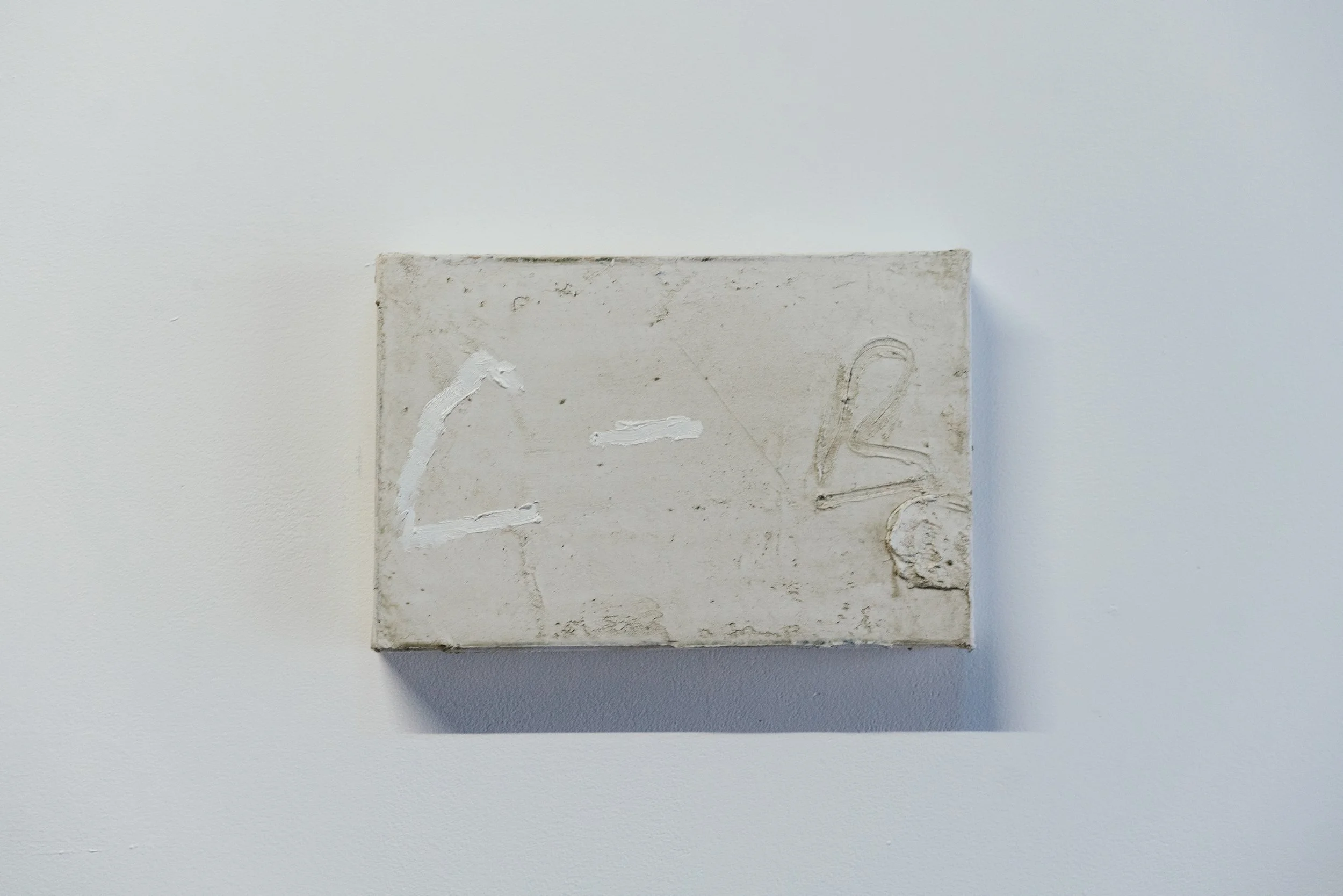Andrew Crane
'Endpoint'
Plaster, acrylic and oil on canvas, 2023
Andrew writes:
"A beginning implies an ending, just as birth implies death. But Life is beyond these opposites. Life is both the cradle and the grave. And while it pays no heed to birth and death, it's forever present. The idea of ‘My life’ / the ‘person', exists only in the mind - An apparent life, between two dates on a tombstone. The painting ‘Endpoint’ illustrates this illusion. The plaster full point is not contained. It hints of continuance. If you like, the painting is the finite life and the infinite space surrounding the painting is Life Itself."
You can see more of Andrew’s work here:
The Critic
Sometimes art can be challenging, as seen in a response to Andrew Crane's painting, ‘End Point’ (Fig.37). “A criticism of Arthood's incestuously familiar ambiguity.” was the title of a post made by a critic of the exhibition. The critic began, “To ask what life after death looks like, you need to ask someone who is dead.” He continues, “... [or else] you end up with the utter nonsense of a show being called whatever first pops into your head and plus work to match.” I was interested in where this conversation would go.
Critic (C)
“To ask what life after death looks like, you need to ask someone who is dead. To answer the question, you need to have died. If, however, it is hard to understand these conditions, you end up with the utter nonsense of a show being called whatever first pops into your head and plus work to match.”
Amy (A)
“Hi C thank you for offering your perspective. It's always interesting to hear different perspectives on the question. I think that death can be interpreted in many different ways, such as a death of an aspect of one's sense of self, or a death (or end) of a familiar way of life. I also see the question as having the potential to be interpreted in different ways, such as, what does life after the death of a loved one, look like?”
C
“Amy South I agree. So, how does Andrew Crane's work represent any of your proposals? For example, if you saw "Endpoint" on the street or anywhere else not associated with art, would it have sparked in you the thought that it is an interpretation of life after death or even might be?”
A
“C, those were just some of my interpretations of the question. There was no requirement for artists to have the same interpretation as me. Andrew's work, Endpoint, in the exhibition afforded me, and others the opportunity to have an experience of this work unique to its context.
By being in the context of the exhibition and question, it became a point of consideration and conversation.”
C
“Amy, what do you mean by unique to its context, its formal qualities? How do these qualities unique to its context relate to the context of the exhibition and question? What point of consideration and conversation did you have that enabled you to conclude that Endpoint or any of the other work you chose was right for the exhibition?”
A
“Unique to its context - the exhibition was the context, containing the works of 49 other artists, who had responded to the question, what does life after death look like?
I think that this curated environment created a context in which reflections upon life and death could be considered, through encounters with the works on display.
I have not made any conclusions about Endpoint or any of the other works. The selection process for the exhibition was intuitive.
The exhibition question can't be answered with a conclusion, and I dont think I can conclusively answer your questions, either.”
